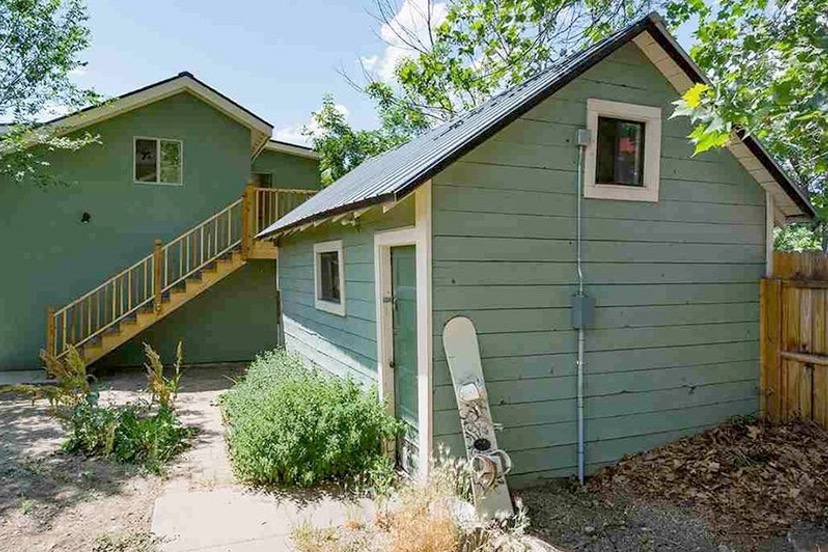This story by Mike Koenig appeared on Colorado Newsline on August 12, 2024
Colorado House Bill 24-1152, which Gov. Jared Polis signed in May, represents an important step forward in boosting the supply of affordable housing in the state’s population centers that need it most. The law, which goes into effect on June 30, 2025, makes it easier for most Colorado residents to build an accessory dwelling unit (ADU, a.k.a. casita, in-law suite, or granny flat).
The man who signed the bill recently explained his rationale for inking it:
“It can improve your quality of life if it’s for a teenager or an aging parent. It can provide additional income for you if you want to rent it out,” Polis said. “Most importantly, it meets a housing need in the community.”
As someone who’s been building ADUs since 2008 and now leads one of the country’s largest manufactured-ADU builders in Louisville, I’d add “energy” to the equation: Energy efficiency, because ADUs are exceptionally well insulated (often more so than the houses they augment) and run on electricity that renewables can generate; and economic and cultural energy, because ADU housing tends to be in urban and close-in suburban areas where creatives and young professionals gravitate. HB-1152 will contribute to all that by making ADUs more cost-effective and streamlining the permitting processes.
But how, exactly?
Let’s take a look at the law that emerged from the efforts of sponsors Democratic Rep. Judy Amabile of Boulder; Democratic Sens. Tony Exum of Colorado Springs and Kyle Mullica of Thornton; and Republican Rep. Ron Weinberg of Loveland, among others.
While there’s a lot of detail in the new ADU law, it’s mainly concerned with creating a more unified regulatory environment with respect to ADUs across much of the state. It also puts $8 million toward making ADUs more affordable for low- and moderate-income residents. Here are some of its key points.
First, the bill won’t apply to many of the state’s rural and mountain towns. It’s limited to those living in larger population centers under the jurisdiction of one of the Colorado’s five metropolitan planning organizations, or MPOs. But that’s most of us.
Second, HB-1152 is easing several burdens, mostly by removing or tempering restrictions and conditions municipalities often place on would-be ADU additions:
- It forbids the blanket prohibition of ADU development in certain areas of town, as Fort Collins currently does. Basically, if there’s room for an ADU, there can be an ADU.
- With some exceptions, it bars local authorities from requiring a dedicated parking spot for an ADU addition, as Boulder now does. That can save thousands of dollars in expanding a driveway, for example.
- It forbids the requirement that the owner must live in the house associated with the ADU — though municipalities can require an owner to live there at the time ADU construction is completed, as Denver’s updated regulations will do. Municipalities can also require that the owner lives in the primary dwelling when applying for a short-term rental license or permit for the ADU.
- It lets ADUs enjoy the same side setback rules as the primary dwelling would; for rear setbacks, it’s either the same as other accessory units (sheds and the like) or five feet.
- It doesn’t let municipalities require architectural style, building materials, or landscaping that are more restrictive than that of the primary dwelling, and it requires allowing ADUs between 500 and 750 square feet. In other words, they can’t “apply a restrictive design or dimension standard” to an ADU.
That said, there are exceptions. With parking, for example, a municipality can require a new parking spot if a driveway, garage, or other parking spot for ADU-related parking doesn’t exist — or where there’s no parking available for the ADU and on-street parking is prohibited. Historic districts can still have their say in prospective ADUs. Municipalities can limit the construction of ADUs less than 500 square feet and more than 800 square feet, ADUs larger than the principal home, and multiple ADUs on the same lot. They can say “no” to motor homes and the like. They can require statements from water and wastewater services that say, basically, “an ADU is A-OK here.”
Most importantly, impact fees and similar development charges are still on the table. That can be a big deal, depending on where you are. In the Boulder County town of Nederland, it costs $66,668 to hook an ADU into the existing home’s existing water and wastewater lines (though the town is reevaluating those fees). Lyons, not too far away, charges nothing for that. Depending on how HB-1152 plays out, that may be a point for lawmakers’ future consideration.
That said, this is a welcome piece of legislation, one that will help families and Colorado communities enliven their neighborhoods, boost the region’s scarce housing stock, and, for those building ADUs as rental units, boost their incomes.

